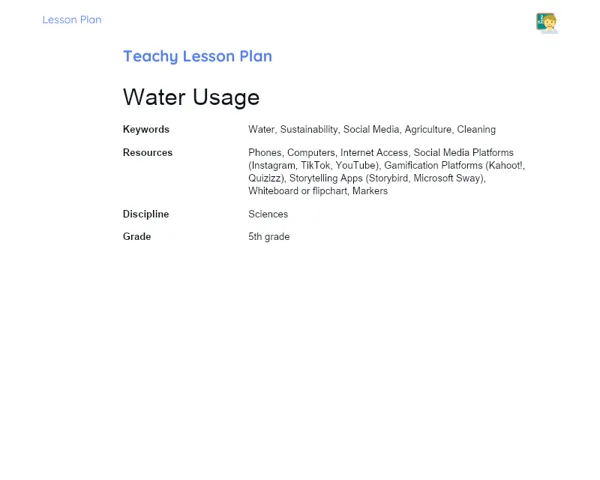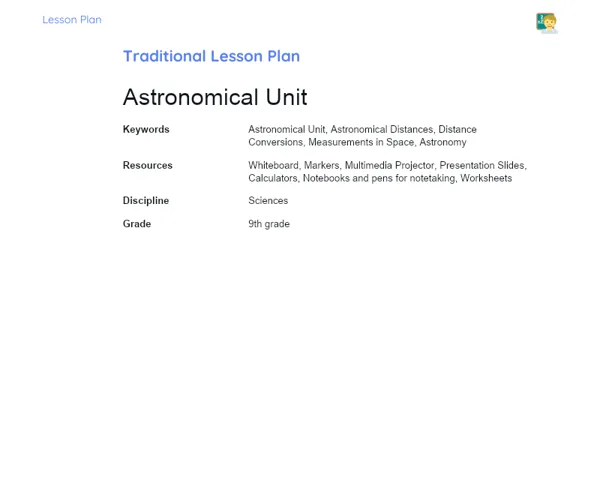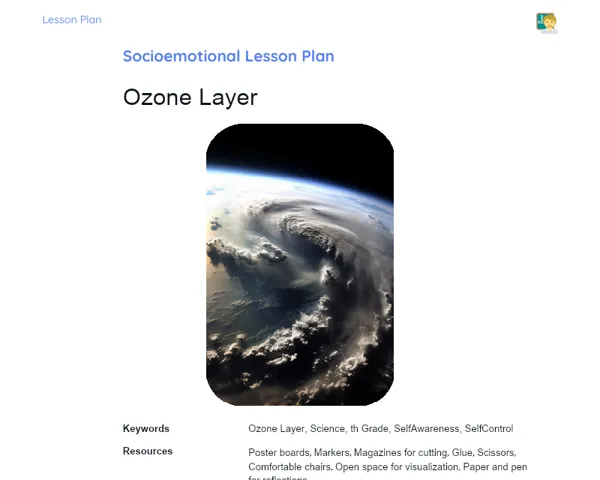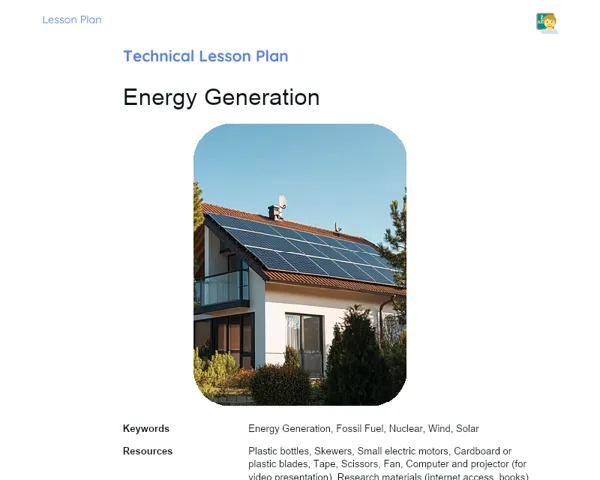Lesson Plan | Socioemotional Learning | Human Body: Cell Organization
| Keywords | Human Body, Organization of Cells, Nucleus, Plasma Membrane, Cytoplasm, Organelles, Prokaryotic Cells, Eukaryotic Cells, Creative Visualization, Cell Models, RULER, Self-Awareness, Self-Control, Responsible Decision-Making, Social Skills, Social Awareness |
| Resources | Modeling clay, Colored paper, Scissors, Glue, Recyclable items, Chairs, Writing paper, Pens or pencils |
| Codes | - |
| Grade | 6th grade |
| Discipline | Sciences |
Objective
Duration: 10 to 15 minutes
The aim of this phase in the Socioemotional Lesson Plan is to introduce students to the topic at hand, laying a solid groundwork on cell organization. By grasping the lesson objectives, students will be able to direct their focus and engagement, which in turn will help in the development of socioemotional skills such as self-awareness and responsible decision-making as they connect the material to their own experiences and feelings.
Objective Utama
1. Understand the basic organization of cells, including the nucleus, plasma membrane, and cytoplasm.
2. Explain the differences between various cellular structures and their functions.
Introduction
Duration: 15 to 20 minutes
Emotional Warmup Activity
🌟 Journey Through the World of Cells 🌟
The suggested activity is Creative Visualization, a technique designed to help students concentrate and prepare emotionally for the lesson. Creative visualization involves envisioning positive and vivid scenarios, fostering a state of mind conducive to calmness and focus.
1. Ask students to sit comfortably in their chairs, ensuring their backs are straight and feet are on the ground.
2. Instruct them to close their eyes and take a few deep breaths, inhaling through their noses and exhaling through their mouths.
3. Begin to guide them with a gentle narration: 'Imagine you are minuscule, so small that you can enter a cell. You are adrift in a vast bright space, surrounded by fascinating structures. There's a nucleus, which resembles a large balloon filled with crucial information.'
4. Continue with the description: 'You also see the cell walls, the plasma membrane, which safeguards everything inside. At the core, there is a jelly-like substance, the cytoplasm, where numerous activities unfold.'
5. Allow students a moment to visualize this scene, encouraging them to be mindful of the details and to absorb the peace of the environment.
6. After a few minutes, invite students to gradually open their eyes and return their focus to the classroom, bringing along the calmness and concentration from their visualization.
Content Contextualization
Understanding cells is essential for comprehending how our bodies function and how life is structured at all levels. Picture each cell as a small bustling city, where various structures and functions collaborate to keep everything operating smoothly. Much like in a city, where everyone has a role, each part of the cell plays a crucial function. This understanding allows us to appreciate life's complexity and the significance of every tiny component in the whole system. As they learn about cellular operations, students can also reflect on how their actions and emotions influence their own well-being, fostering a greater sense of self-awareness and self-control.
Development
Duration: 60 to 75 minutes
Theory Guide
Duration: 20 to 25 minutes
1. Nucleus: The nucleus can be likened to the 'brain' of the cell. It houses the genetic material (DNA) that manages all cellular activities. A handy analogy is comparing it to a library filled with instruction manuals that guide the cell's functions.
2. Plasma Membrane: The plasma membrane acts as the cell's 'boundary'. It regulates what enters and remains inside the cell, ensuring a stable internal environment. Think of it as a city wall with gates that open to let friends in while keeping intruders out.
3. Cytoplasm: The cytoplasm serves as the cell's 'work area'. This jelly-like liquid occupies the cell and contains all the organelles, where essential chemical reactions transpire. Imagine the cytoplasm as the floor of a workshop where different machines (organelles) carry out their specific tasks.
4. Organelles: Within the cytoplasm, you will find various organelles, each with a precise role. For example, mitochondria are akin to the cell's 'power stations', generating the energy necessary for cellular functions. Ribosomes are the 'protein factories' that construct new proteins based on the nucleus's directives.
5. Explain the difference between prokaryotic and eukaryotic cells: Eukaryotic cells possess a defined nucleus and membrane-bound organelles, whereas prokaryotic cells, such as bacteria, lack a true nucleus or membrane-bound organelles.
Activity with Socioemotional Feedback
Duration: 40 to 50 minutes
🔬 Crafting Cell Models 🔬
In this activity, students will create three-dimensional models of cells using simple materials like modeling clay, colored paper, and recyclable items. Hands-on model-making will aid students in visualizing and comprehending the structure and organization of cells.
1. Divide the students into groups of 3 to 4.
2. Distribute the necessary materials to each group: modeling clay, colored paper, scissors, glue, etc.
3. Instruct each group to create a cell model, including the nucleus, plasma membrane, cytoplasm, and some organelles.
4. Ask the groups to decide whether they wish to depict an animal or a plant cell, highlighting the key distinctions (like the cell wall and chloroplasts in plant cells).
5. As students engage in the activity, move around the classroom to provide support and answer questions.
6. Once the models are complete, have each group present their work to the class, explaining the parts of the cell and their functions.
Discussion and Group Feedback
Following the model presentations, facilitate a guided discussion using the RULER method to reflect on the activity. Encourage students to recognize how they felt during the creation and presentation of the models. Was it enjoyable, demanding, or exasperating? Next, aid them in understanding the roots of those emotions; for example, working in a team could have brought either joy or stress.
Label the feelings accurately and encourage students to express how they coped with these emotions during the activity. Discuss techniques for regulating emotions, such as asking for support when necessary or evenly distributing tasks among group members. Prompt students to consider how these socioemotional skills may be useful in other facets of their lives, both academically and personally.
Conclusion
Duration: 15 to 20 minutes
Reflection and Emotional Regulation
Invite students to reflect on the obstacles they faced during the lesson and how they managed their feelings. This can be done through either written reflection or in a group discussion. Students may write a paragraph about a specific instance where they experienced a strong emotion (positive or negative) and how they navigated it. Alternatively, during a talking circle, students can share their experiences and discuss the strategies they employed to stay focused and calm.
Objective: The goal of this activity is to promote self-assessment and emotional regulation, allowing students to identify effective ways to confront challenging situations. By reflecting on their emotions and actions, students enhance their self-awareness and self-control, which are vital skills for both academic success and personal well-being.
Glimpse into the Future
To conclude the lesson, ask students to establish personal and academic goals in relation to the content learned. They can specify a goal they aspire to achieve in the coming week, such as delving deeper into a particular cellular organelle or practicing an emotional regulation tactic learned during the lesson. Discussing the goals in small groups can bolster commitment and offer mutual support.
Penetapan Objective:
1. Learn more about the functions of mitochondria.
2. Practice the creative visualization technique to stay calm before exams.
3. Engage actively in upcoming science lessons.
4. Share with family the knowledge gained about cells.
5. Implement emotional regulation strategies in stressful situations at school. Objective: The aim of this part is to enhance student independence and the practical application of their learning. Setting clear and attainable goals encourages students to continue developing their academic and socioemotional skills, fostering ongoing personal and academic growth.



